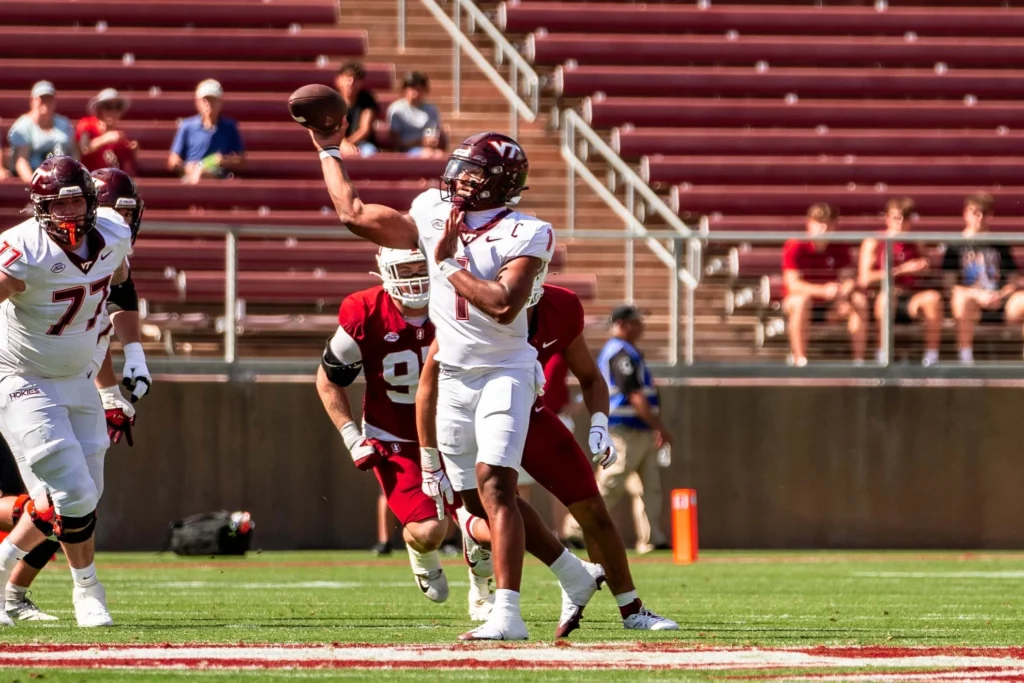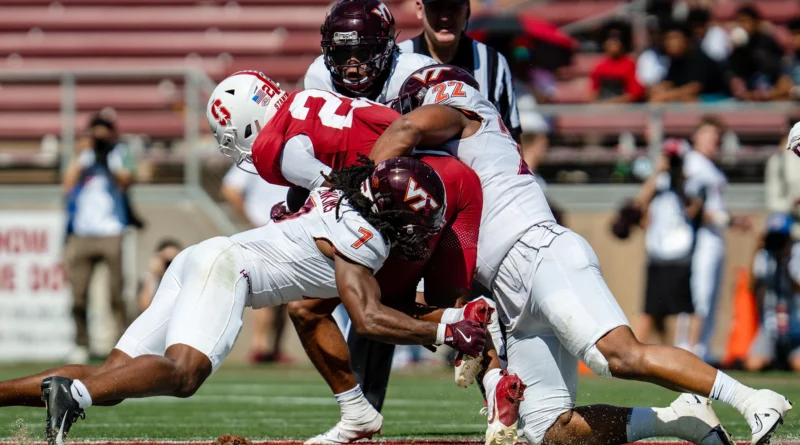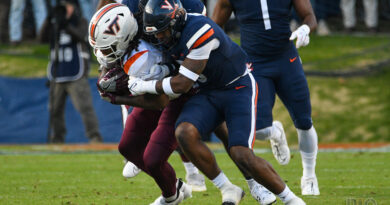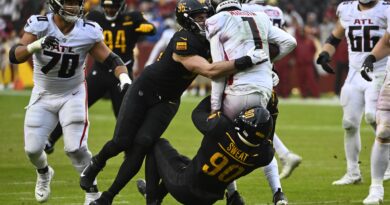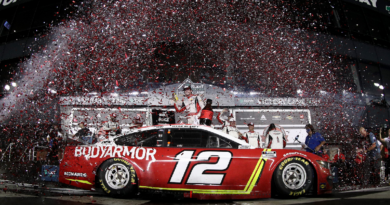Virginia Tech Dominates Stanford for a 31-7 Victory (10-5-24)
By: Joey Raymond
Headline Photo Credit: Virginia Tech Athletics
In a highly anticipated ACC matchup, Virginia Tech and Stanford faced off for the first time as conference opponents, with the Hokies delivering a dominant 31-7 victory. Both teams entered the game with something to prove, but it was Virginia Tech that seized control early and never looked back. The Hokies used a balanced offensive attack led by quarterback Kyron Drones, a relentless running game, and a stifling defense to keep Stanford at bay for most of the afternoon. While Stanford had moments of promise, their inability to capitalize on key opportunities—combined with costly turnovers—proved to be their undoing. Virginia Tech, meanwhile, executed when it mattered most, using long, methodical drives and timely defensive stops to build an insurmountable lead. This win was a statement for the Hokies as they continue their push in the ACC, improving to 4-2 on the season and gaining valuable momentum heading into the second half of the schedule.
First Quarter: Hokies Capitalize on Early Opportunities
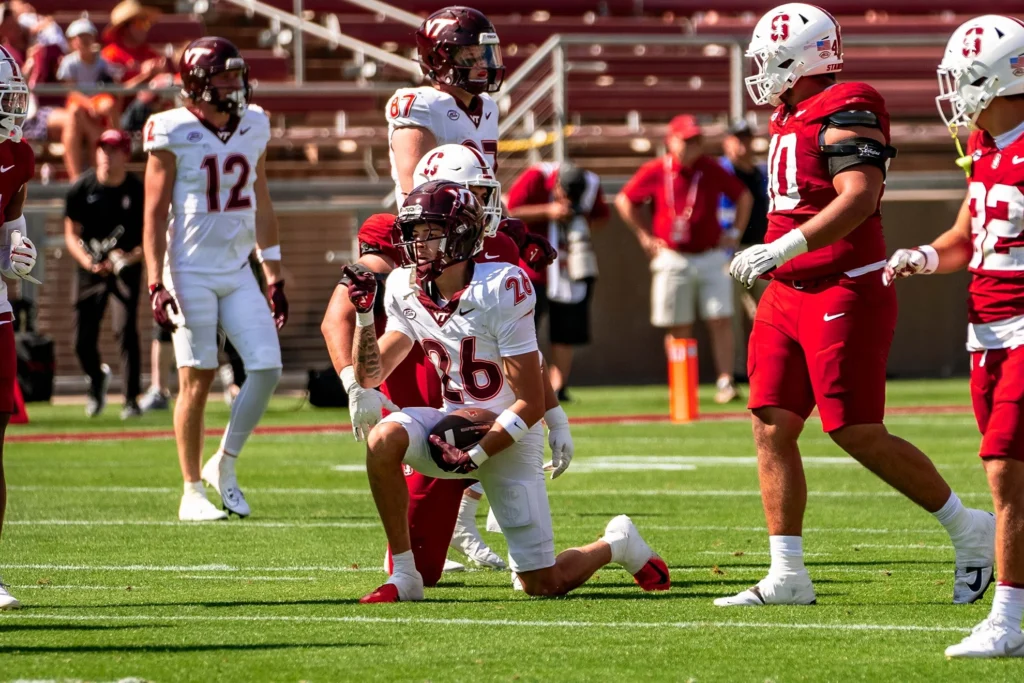
The game kicked off with Stanford’s offense showing early promise. The Cardinal’s opening drive saw quarterback Justin Lamson command a balanced attack, leading his team down the field with a mix of short passes and runs. However, the Hokies’ defense, led by their hard-hitting front seven, stiffened as Stanford approached the Virginia Tech 35-yard line. Stanford attempted a 53-yard field goal, but the kick sailed wide, keeping the game scoreless and shifting momentum in favor of the Hokies.
Virginia Tech wasted no time on their first offensive possession, moving the ball with precision. Quarterback Kyron Drones connected on a critical 24-yard pass to Jaylin Lane, flipping the field and putting the Hokies within striking distance. On the very next play, Drones found Steven Gosnell in the end zone for a 9-yard touchdown pass, capping off a well-executed drive and giving the Hokies a 7-0 lead.
Stanford looked poised to respond on their next possession, putting together an impressive 12-play, 47-yard drive that chewed up over six minutes of game time. The Cardinal found themselves deep in Virginia Tech territory, but their progress came to a sudden halt when Lamson was hit hard at the 2-yard line, forcing a fumble that was recovered by the Hokies. This pivotal turnover swung momentum squarely in Virginia Tech’s favor, allowing them to maintain their 7-0 lead as the first quarter came to a close.
Second Quarter: Hokies Build on Momentum
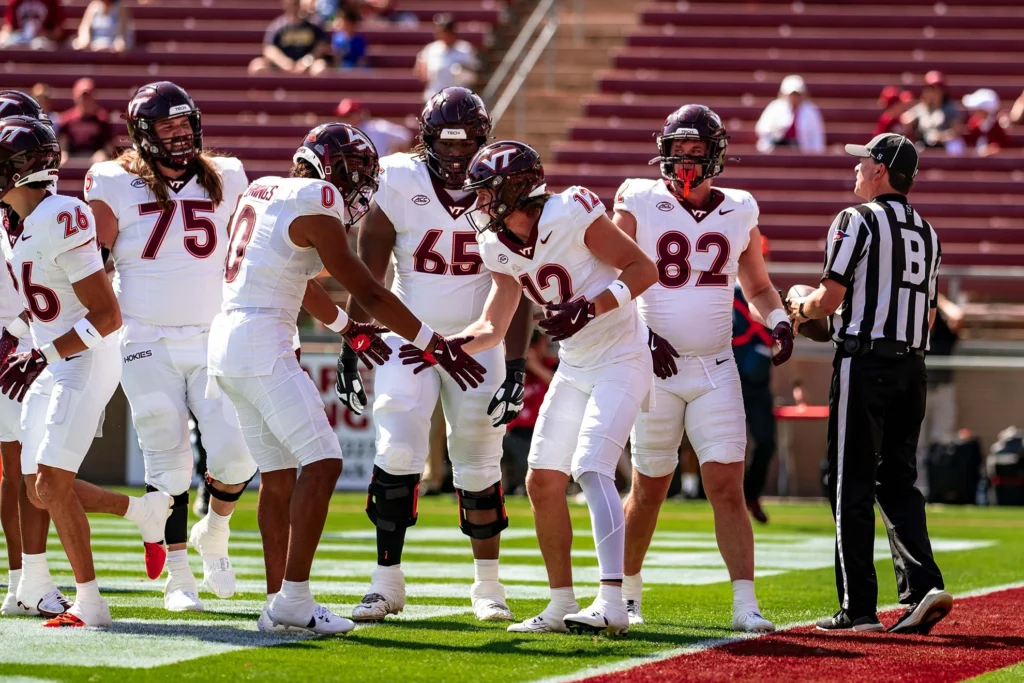
Despite the momentum from the fumble recovery, Virginia Tech’s offense stalled early in the second quarter, unable to gain significant yardage. A well-placed punt by Tyler Moore pinned Stanford back at their 30-yard line, and the Cardinal once again moved the ball methodically toward midfield. However, just as they had done on the previous drive, the Hokies’ defense clamped down, forcing Stanford to punt.
Virginia Tech’s offense regained its rhythm on the ensuing drive, with Drones spreading the ball around to multiple receivers while running back Bhayshul Tuten became the engine of the Hokies’ attack. Tuten’s powerful running style and ability to find gaps in Stanford’s defense allowed the Hokies to march down the field, covering 88 yards in 13 plays. A 24-yard pass to Steven Gosnell set up Tuten’s touchdown run, extending Virginia Tech’s lead to 14-0. The drive took nearly seven minutes off the clock, leaving Stanford little time to mount a comeback before halftime.
Stanford’s offense continued to struggle, gaining only one first down before being forced to punt the ball back to Virginia Tech. The Hokies, content to control the clock, focused on their ground game for the remainder of the half, chewing up time and maintaining their 14-0 lead at the break.
Third Quarter: Hokies Take Command
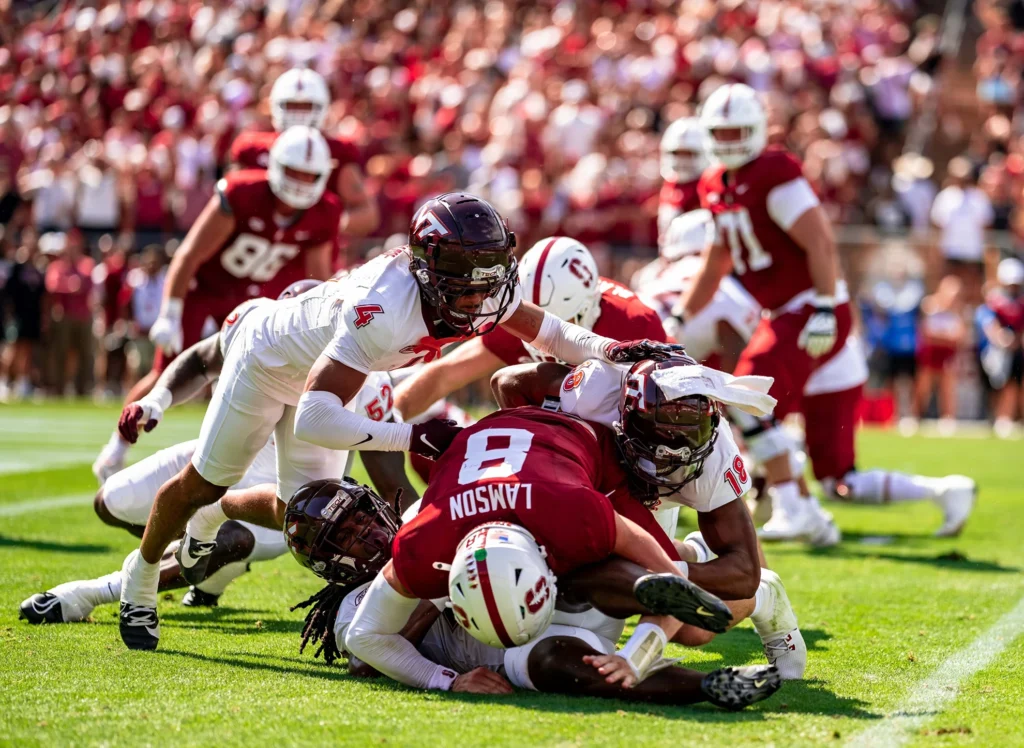
The Hokies came out of the locker room determined to put the game out of reach early in the second half. On just the fourth play of their opening drive, Drones unleashed a deep pass to wide receiver Da’Quan Felton, who raced 55 yards to the end zone, igniting the home crowd and giving Virginia Tech a 21-0 advantage. The explosive play set the tone for the second half, as the Hokies looked to capitalize on every opportunity to extend their lead.
Virginia Tech’s defense remained relentless, forcing Stanford into a quick three-and-out on their next possession. The Hokies’ offense looked to strike again, but after gaining one first down, they were forced to punt for the first time in the game. Stanford, with their backs against the wall, finally found a spark. Starting from their 20-yard line, the Cardinal put together their best drive of the game—a 12-play, 80-yard march that ended with a highlight-reel touchdown catch by wide receiver Bryce Ayomanor. The score trimmed Virginia Tech’s lead to 21-7, giving Stanford a glimmer of hope with just over a quarter left to play.
However, the Hokies quickly responded by slowing the game down and keeping the ball on the ground. Virginia Tech’s next drive ended with a punt, but the defense made sure Stanford didn’t capitalize on their brief momentum shift. The third quarter ended with the Hokies still in control, leading 21-7.
Fourth Quarter: Hokies Seal the Deal
